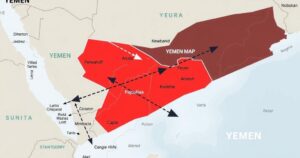Several Killed as Separatists Clash with Malian Army, Russian Allies in Conflict-Hit North

In northern Mali, a two-day clash between Malian security forces and separatists resulted in at least 10 separatist deaths. The Azawad group claimed high soldier casualties, with claims of dozens killed, while Malian troops suffered the loss of three members. This incident underscores the complex military dynamics in the region as Russian mercenaries shift their presence.
BAMAKO, Mali — In the northern region of Mali, tensions erupted into violence as Malian security forces engaged in a two-day clash with armed separatists, leading to significant casualties. According to the Malian army, 10 members of the Azawad separatist group were killed, though the separatists claimed to have inflicted heavier losses on the Malian military, asserting that many soldiers were killed alongside members of a Russian-controlled armed force.
The clashes initiated with a military offensive in Kidal, a northern region heavily affected by conflict. On Friday, a convoy belonging to the Malian military faced an ambush, which they later repelled. The separatists reported that in this ambush, they managed to kill “dozens” of Malian soldiers and fighters associated with the Kremlin-backed African Corps.
The Azawad separatist movement, which has long sought the establishment of an independent state of Azawad, has faced a turbulent relationship with Malian security forces. Previously, the separatists had expelled government forces from the region until a faltering peace agreement was reached in 2015, which allowed some former rebels to be integrated into the Malian military.
Mohamed Maouloud Ramadan, a spokesperson for the Azawad separatists, communicated in a statement that they had captured a substantial loot during the clashes, which included 12 trucks filled with cereals, diesel tankers, a military pickup, and an armored vehicle from the military convoy. He also acknowledged losses, indicating that three of their members were killed in the skirmishes.
Viral videos circulating among the separatists portrayed military trucks engulfed in flames across vast desert areas, accompanied by sounds of gunfire. In these videos, armed young men donned in hooded attire were seen posing beside the burning vehicles, alongside what appeared to be bodies in uniforms reminiscent of those worn by the Malian army. However, the authenticity of these videos has not been independently verified by the Associated Press.
The continuing pattern of clashes highlights the increasing challenges faced by Mali’s security forces operating in difficult terrains, particularly in Kidal. Rida Lyammouri, a Sahel expert at the Morocco-based Policy Center for the New South think tank, explained that gathering actionable intelligence has proven difficult, thus providing armed groups an enhanced advantage in these operations.
These recent confrontations come shortly after the announcement from Wagner, a Russian mercenary group that has supported Malian forces for over three years, that it will be withdrawing from the country. In contrast, the African Corps, which operates under the direct command of the Russian defense ministry, confirmed its intent to remain in Mali. Reports indicate that approximately 2,000 mercenaries are currently stationed in Mali, though the specific numbers from Wagner versus the African Corps remain unclear.
The clashes between Malian security forces and separatist groups in the northern region signify ongoing instability in Mali. Despite significant claims from both sides regarding casualties, the situation remains fraught with uncertainty. The withdrawal of Wagner complicates matters further as the African Corps remains, highlighting a transitional period in Mali’s military dynamics. The effectiveness of military operations in challenging terrains like Kidal continues to challenge Malian forces, opening opportunities for armed separatists.
Original Source: www.newsday.com








